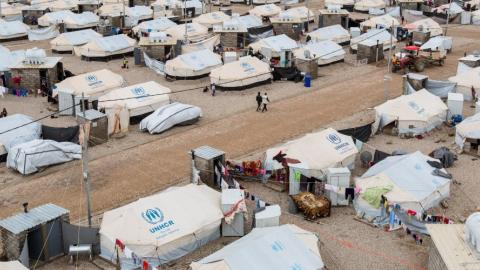
What is disaster management?
We act before, during and after disasters strike, often providing assistance in some of the world’s most hostile environments.
Our disaster management activities seek to:
- Save lives and reduce human suffering
- Protect and restore livelihoods
- Reduce the risks faced by communities affected by disaster and conflict.
DISASTER MANAGEMENT
Whether natural or man-made, children are the most vulnerable when a disaster strikes. More than half of the people who are affected by disasters are children. It is our calling to protect the well-being of children affected by disasters.
DM2020 (Disaster Management 2020) is our child-focused disaster management strategy, designed to meet the needs of the world’s most vulnerable children.
Our areas of focus in disaster management include:
EARLY WARNING
Our teams monitor signals and indicators of both natural and man-made threats. This information warns of emerging events, such as typhoons, flooding, the precursors of famine and stirrings of conflict, so we can anticipate and reduce the impact of a humanitarian emergency.
DISASTER RISK REDUCTION
Through proper training and planning, we can help minimise the loss to children and families when a disaster strikes.
We work with families and individuals as well as local, national and international partners across the world to ensure communities are aware of the risks they face and how to properly prepare and respond in the event of an emergency.
Our programmes are designed to eliminate or mitigate hazards within their control, increase community resilience and provide training in disaster risk reduction. Activities aim to:
- Reduce vulnerabilities – including physical, social, economic and environmental factors that increase susceptibility.
- Lessen the impacts of natural and man-made conditions that have the potential to adversely impact the lives and livelihoods of communities.
- Develop and enhance the capacity of individuals, communities and institutions to reduce risk and build up resilience. The better the capacity the more resilient to risk.
PREPAREDNESS
In addition to helping communities and families prepare for disasters, our own preparedness means we are ready to help communities when a disaster strikes.
Stores of relief items are maintained in most countries where we work and in strategically-located disaster response warehouses. These items include:
- Tarpaulins
- Household kits
- Water carriers
- Reliable access to emergency food supplies
- Water purification tablets
- Shelter materials
- Cooking utensils
- Blankets
RESPONSE
Our Global Rapid Response Team brings together international disaster experts from around the world, who are deployed within hours of a major emergency to support local teams and communities.
Our Global Prepositioning Resource Network (GPRN) ships in emergency supplies strategically located in four warehouses across the globe. The GPRN team also provides other World Vision staff with visibility items, vehicles and field communications equipment.
Short-term funding for emergency responses is also made available through our Emergency Preparedness Response fund, until other funds, including government grants and public appeals become available.
In a large-scale response, we collaborates with the United Nations and other local aid agencies. This collaboration helps avoid duplication, maximise efficiencies, ensure all needs are met and eliminate gaps in humanitarian response.
RECOVERY
We focus on a number of areas to help children and families in their recovery following a disaster:
- Water and sanitation
- Health and nutrition
- Food
- Child protection
- Education for children
- Shelter
- Humanitarian protection
- Humanitarian advocacy
TRANSITION
Following recovery from a disaster, we remain on the ground, helping children and their families to transition to permanent housing, clean water, sustainable sources of food and access to education. We work with partners and local communities so they can re-establish their livelihoods and be more resilient to future disasters.
LEARN MORE
- What is a humanitarian disaster?
- Learn more about our strategy for disaster management